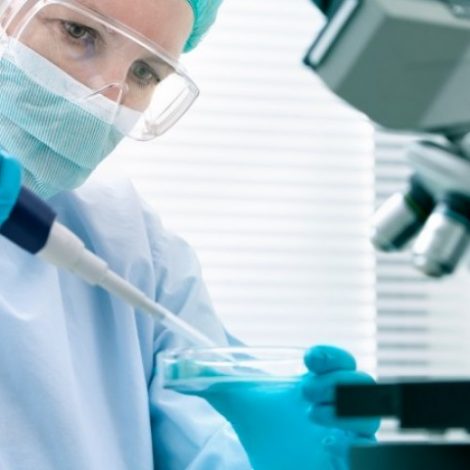Small Molecule Raises Utrophin Levels to Rescue Muscle Function in DMD, Mouse Study Suggests

A small molecule, trichostatin A (TSA), increased the levels of a dystrophin-related protein known as utrophin, and improved the structure and function of muscles in a mouse model of Duchenne muscular dystrophy (DMD), a study found.
The study, “High-throughput identification of post-transcriptional utrophin up-regulators for Duchenne muscle dystrophy (DMD) therapy,” was published in the journal Scientific Reports.
DMD is caused by mutations in the gene that encodes the dystrophin protein, a key protein that protects muscle cells.
Using gene therapy to deliver the dystrophin gene is a potential way to treat DMD, but it has its challenges.
The human dystrophin gene is large, so a smaller version has to be designed to allow it to be delivered into cells via harmless transport agents called adeno-associated viruses. Also, as patients produce little to no dystrophin, the body’s immune system may recognize the newly introduced dystrophin as foreign and attack it, lowering its levels and treatment efficacy.
“We’re trying to find therapies that will restore a patient’s muscle function without resorting to gene therapy,” Tejvir S. Khurana, MD, PhD, the study’s senior author and a member of the Pennsylvania Muscle Institute, said in a press release.
Utrophin is a protein structurally and functionally similar to dystrophin. It is normally produced during embryonic development. Researchers believe that increasing the levels of utrophin during adulthood may compensate for the absence of dystrophin in patients. Promising effects have long been shown in mice.
“Increasing utrophin is a major focus of muscular dystrophy research,” said Khurana. “While, ideally, we would replace the missing dystrophin in patients, there are a number of technical and immunological problems associated with this approach.”
In contrast to newly delivered dystrophin, raising utrophin’s levels would not induce an immune attack, as the body already produces it and does not recognize this protein as foreign.
Previous attempts included raising utrophin levels by activating its gene’s “promoter,” the DNA sequence that controls the activity of a gene.
However, the body has mechanisms that counteract this increase, which may prevent utrophin from reaching therapeutic levels.
Researchers from the Perelman School of Medicine at University of Pennsylvania searched for small molecules that would overcome the repression of utrophin that normally occurs during adulthood.
They screened a library of 3,127 small molecules, including approximately 1,000 therapies approved by the U.S Food and Drug Administration (FDA).
The screen identified 27 promising small molecules. Their effectiveness, potency and specificity was then ranked using a new algorithm, called Hit to Lead Prioritization Score (H2LPS).
The top 10 small molecules were then tested in a muscle cell line for their ability to raise utrophin’s levels within 24 hours.
Eight of the candidates resulted in an increase in protein amounts of over 1.5-fold compared with a control. TSA scored highest in this test, raising utrophin by 3.9 times. It also had the highest H2LPS score.
The researchers then assessed the effects of TSA in a mouse model of DMD. Young mice were injected with TSA (30 micrograms per kilogram of body weight) every other day for three months. Muscle levels of utrophin were doubled with TSA, compared with mice receiving a control. Muscle structure and function also improved.
TSA acts to block enzymes known as histone deactylases, which alter gene activity by changing the three-dimensional folding of DNA in the cell. Previous work suggested that this approach may have therapeutic potential in DMD.
“TSA and the other small molecules identified here represent potential starting points for DMD drug discovery efforts,” the scientists wrote.
“Our next steps here will be to do more screenings to identify new hits using chemically diverse libraries,” said Khurana.
“This is a completely new approach to increase utrophin for this condition, and we’re very keen to test it further and eventually bring it to clinical trials,” he said.






